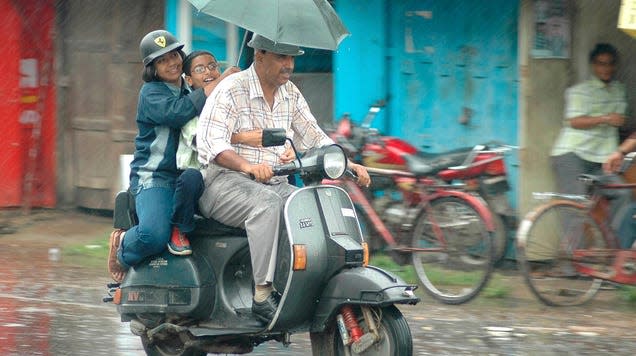India’s Met office expects a normal monsoon—but its only private forecaster is less optimistic

India’s official meteorological body and its only private weather forecaster have differed over the annual rainy season for 2023. While their predictions are only marginally different, it is reflective of a persistent, low-key tussle between the old and the new on a matter of utmost importance to the country.
India Meteorological Department (IMD) has held the torch of weather forecasting for nearly 150 years, but, for several reasons, is often perceived to be inefficient. “Even 20 years of data,” gathered by India Today showed IMD’s seasonal monsoon predictions going wrong.
Read more
Two-decade-old Skymet Weather Services, on the other hand, comes across as more tech-savvy with its predictions varying, even if only slightly, from IMD’s.
“It is not much of a difference between IMD forecasts and our forecasts,” GP Sharma, vice-president of weather forecasting at Skymet, told Quartz.
Differing monsoon predictions by IMD and Skymet
In 2018, the last time El Niño occurred, IMD predicted 97% precipitation of the long-term average. Skymet predicted 91% and was proven right. The next year, rainfall exceeded both their forecasts.
In 2020, IMD projected 100%, while the actual figure was 109%—Skymet did not forecast at all.
A year later, IMD’s 101% figure was closer to the actual 99%, while Skymet predicted 94%. IMD had also predicted a two-day delay in the arrival of the monsoon in 2021, while Skymet said it had already arrived.
Last year, the actual rainfall of 106% exceeded both IMD’s (103%) and Skymet’s (94%) forecasts.
For this year, Skymet was first off the block. On April 10, it forecast 94% precipitation. This is less than the normal range (96%-104%) of the 50-year average of 87 cm. A day later, IMD put the figure at 96% of the long-term average, and within the normal range. It also cautioned against the El Niño phenomenon towards the latter part of the rainy season.
These differences may be small but matter much to the country.
Why weather forecasting matters in India
The Indian subcontinent’s annual rainy season spreads from June to September, rejuvenating its water bodies, agriculture, and, often, even the economy.
After all, millions of Indian farmers depend on the monsoon for irrigation. Agriculture accounts for nearly 20% of the country’s GDP. Food prices also contribute to about 40% of its consumer inflation basket.
“The volume of rainfall, its timing and dispersion will crucially influence crop sowing and output, as well as prices,” Aditi Nayar, chief economist at credit rating agency ICRA, said in an April 11 note.
IMD’s history of 150 years
IMD was established in 1875 following the miseries wrecked by the tropical cyclone that struck Calcutta (now Kolkata) in 1864 and the failure of the monsoon in 1866 and 1871. Till then, India only had several observatories functioning independently.
The agency is now run under the Indian government’s ministry of earth sciences. Apart from meteorological observations, it is also responsible for the field of seismology.
Despite its wealth of experience, the IMD’s predictions, though the official word on drought and rain, have often gone wrong.
For instance, in 2009, an El Niño year, it predicted normal rains but India ended up experiencing its worst drought in 30 years. “I can tell you one thing, IMD has never forecast a normal monsoon during an El Nino year,” said Skymet’s Sharma.
For most of the past decade, IMD’s forecasts have breached the 5% error margin.
For 2023, “The IMD downplayed the El Niño impact, expecting such conditions to develop in the second half of the season and stating that there was normal or above-normal rainfall in 40% of El Niño years,” an April 11 Nomura report stated.
Skymet, the only challenger to IMD
Noida-based Skymet was established in 2003 by journalist-turned-entrepreneur Jatin Singh. It began by providing weather graphics to the Indian media, but by 2012, it was forecasting, becoming the country’s lone challenger to IMD.
Today, Skymet provides reliable seasonal forecasts for up to seven months, its LinkedIn page claims.
It has over 7,500 automated weather stations, 27 lightning detectors and 200 air quality sensors installed across the country, Jatin Singh’s own LinkedIn account says. The agency also has India’s largest drone fleet, it said.
More from Quartz
Sign up for Quartz's Newsletter. For the latest news, Facebook, Twitter and Instagram.

